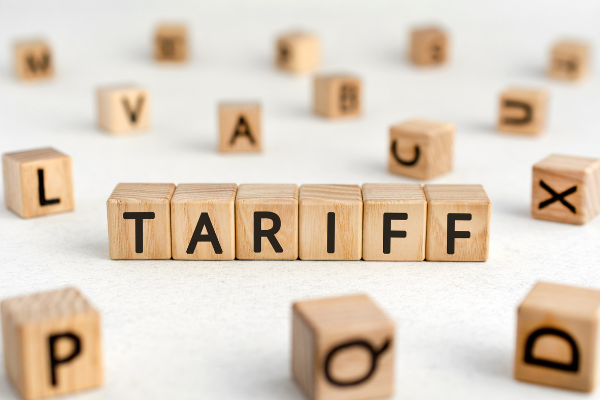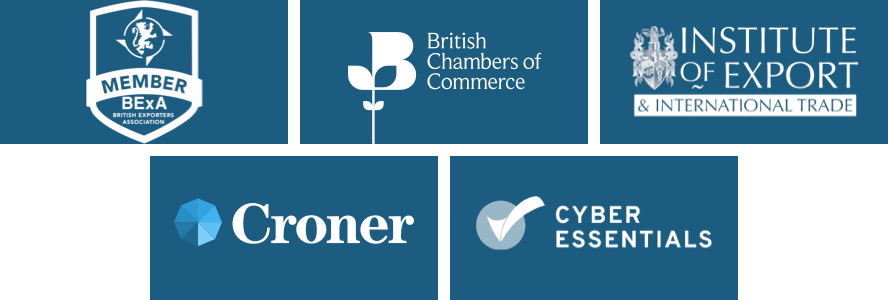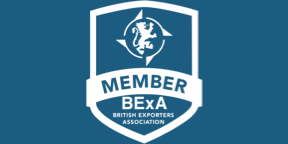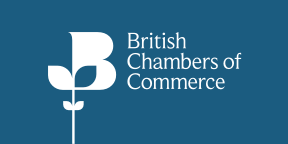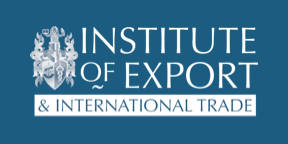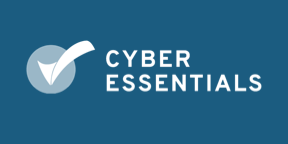BY:
SHARE:

Embarking on international trade can be a complex and daunting task, even for seasoned professionals. The cross-border movement of goods presents a myriad of challenges that require a solid understanding of the principles of international trade compliance.
Keeping up with regulation changes, not only in the export country but also in those countries we are exporting to, can be beyond our day-to-day ability. It’s not until something doesn’t go as planned that we determine something is wrong, not with how we have approached the movement but with how it is managed on the receiving end, at import.
Acquiring a comprehensive understanding of the three pillars of Customs Compliance is a crucial step in navigating the complexities of international trade. This knowledge will serve as a guide, helping you grasp where these principles originated, what they are designed to support, and how to implement them effectively.
Getting the groundwork right in the first place helps one to understand Customs compliance in general. It can give clear insight into approaching irregularities on the other side of that export fence—in the country of import.
The Three Pillars of Customs Compliance
Classification, Valuation, Origin
The three pillars of Customs compliance were established early in the evolution of the World Trade Organisation and developed into international trade facilitation agreements. From there, The World Customs Organisation takes responsibility for implementing WTO agreements into working practices. The international trade facilitation agreements flow into working practice through national Customs regulations and policies that adhere to internationally agreed standards and procedures supported by the WCO.
Although these procedures may vary at national level, it helps to understand their origins, the agreements that support them, and why those procedures have been set in place at the borders. Customs Authorities sing from the same hymn sheet, adhering to the same basic principles.
Accurate data presented at the border is a cornerstone of Customs compliance. Understanding its importance and ensuring its precision is vital for a smooth and efficient international trade process.
Classification:
The Harmonised System was cleverly designed so that its numeric system could be understood without language barriers. The aim of the HS Tariff is clarity and predictability. If you understand how to classify goods accurately, you should be able to determine how your goods will be treated at import virtually anywhere across the globe.
Four main functions of the Harmonised System:
- For the calculation of Customs duties and taxes. Published data affords predictability as to costs.
- To collect international trade statistics
- As a guide when assessing rules of origin, the second of the 3 main pillars of compliance
- As a mechanism for protecting the domestic markets and identifying protectionist measures. Clarity on national measures implemented at the border that could increase the cost of your import or detail extra certification requirements as examples.
The Harmonised System (HS) was designed with the most natural and fundamental products placed first in the sequence. For example, if you look at the UK HMRC Trade Tariff website (https://www.trade-tariff.service.gov.uk), you will see that live animals and plants come first, and the more complicated items like machinery, cars, and furniture are towards the end of the schedule.
Importers and exporters must pay due diligence towards classification as an essential trade tool. The basic questions when classifying an item are
- What is it?
- What is it made of?
- What are its essential characteristics?
- How does it work?
- How is it presented/packaged to Customs?
Answering these questions is not left to personal choice. The General Rules of Interpretation and the Chapter Notes in the Tariff help further. In real terms, there is no reason to get it wrong. It just takes practice, training, and some Tariff savvy.
General Interpretive Rules
Rule 1: Goods should be classified according to the Terms of Headings and any Section or Chapter Notes
Rule 2: Covers unfinished, unassembled articles and mixtures of materials.
Classify as the essential character of the complete or finished article
Rule 3: Covers three ways (a,b or c) to classify goods which fall under two or more headings (including sets and composite goods)
Rule 4: Covers goods which cannot be classified using the preceding Rules
Rule 5: Relevant to all classifications
Covers how to classify packaging materials and containers
Rule 6: Extends the scope of the preceding Rules to cover classification at the sub-heading level. In other words, start again.
A link to the WCO wording is below for reference:
Microsoft Word - 0000-2012E.doc (wcoomd.org)
Origin
What exactly is meant by Goods Origin?
Simply, it states where a product originates. For natural goods, such as raw materials, flora, and fauna, this is where they are dug out of the ground, born, or grown. For manufactured items, it is where the last substantial economically justified process takes place.
Straightforward? You would hope so but establishing some goods’ original and exact origin can be challenging in our integrated, complex trading system. Hence, we have international rules to guide us.
The most common error in declaring origin when importing or exporting is declaring where the goods are imported or exported. The country from which the consignment is sent is not necessarily the country of origin of the goods. This terminology is the ‘country whence consigned.’
Why is Declaring Goods Origin important?
Keeping control:
Tariff Restrictions: Additional duties may be imposed to deter purchasing goods made outside the domestic market.
Remember when the US added an additional 25% Tariff on EU- and UK-originating steel imports, making imports 25% more expensive? The UK and EU retaliated by imposing a further 25% import duty on US-originating steel. Steel imports on both sides of the Atlantic became costly and prohibitive.
The classification and origin of goods affected by the recent escalation in Russian Sanctions decide the import of those goods.
Where goods are flagged on the Tariff as being subject to restrictions where the origin is Russian, an importer has an obligation to prove that their goods are not Russian-originated goods. Extra documentary evidence is required to be on file for the HMRC audit. Likewise, the UK exporter must demonstrate the same when exporting to countries with similar controls.
Other controls include the differentiation between imported and domestic goods, brand recognition and the protection of Intellectual Property at the international level, quality marking relating to standards required for import, geographical indicators relating to goods with protected geographical status (Champagne from Champagne in France, for example), and the legal requirements for ‘Country of Origin’ Marking.
Accurate data on goods' origin enables the use of Preference Origin, a method of reducing duty or Tariff rates negotiated under trade agreements. The origin of goods under the agreed Tariff classification links directly to the terms of those trade agreements. Accurate compliance data at import relating to goods' origin will allow for the implementation of lower duty rates on the import of those goods.
It is also important to keep inventory records on goods' origin, as origin will need to be declared on export and may also be required to be declared as part of your supply chain obligations to enable your customers to make supplier or Customs declarations going forward.
Valuation
It’s all about the cash.
What an import is worth for Customs purposes is not subjective. A high percentage of Customs invoices detail the transaction price, which is, for the most part, accurate in the Customs declaration, but there may be a wealth of detail that is missing.
The declaring agent will complete the Incoterms®, freight data, and other regulatory-standard information onto the declaration. However, other valuation considerations are necessary that may not be visible to those giving the declaring agent the import instructions.
Examples:
If a business imports purchased goods but has paid for an additional warranty for repairs as part of the purchase contract, the warranty value will need to be declared to HMRC.
The purchased warranty must be declared to HMRC as part of the Customs Value to evidence compliance when goods are subsequently reimported after the export for warranty repair.
Without evidence of compliance that the warranty has been declared, HMRC will consider returning repaired goods as new supplies and will require duty and VAT paid.
A contract where free-of-charge goods are issued as part of contract terms will not be free of charge for Customs purposes.
A Customs value must be established on import, and appropriate duties and VAT must be paid on that value. These charges should perhaps be considered during the contract negotiation phase, or a contract project could encounter unexpected import costs that may be extensive.
Consider a project where the free issue supplied good is steel for manufacture in the UK, shipped from a country subject to countervailing import charges. If the importing business is unprepared, the duty costs could be considerable and irrecoverable.
The value declared and the value on the invoice may also be adjusted depending on the Incoterm® used, the insurance paid, and the distance the goods have travelled.
Customs charge duty on the CIF Value of the goods, namely: (C) Cost of goods, (I) Insurance amount and (F) Freight (less the delivery costs in the UK)
If these elements are already included in the purchase price, it must be clear at import, and evidence must be on file for an HMRC audit.
Establishing the logistics cost of the goods delivered across the border to the place of delivery matters to you as the importer, but the authorities will take this into account as part of the Customs Valuation process at import.
At audit, HMRC will be looking to recover any revenues mis-declared at the border.
Establishing Customs Value
The burden of proof always remains with the importer, so it is vital to get it right!
Customs Valuation Methods stem from the WTO Valuation Agreement, which laid down the methods of valuation used when assessing duty and taxes for goods at import.
There are 6 methods to determine goods value at import:
- Method 1: Transaction Price: Price paid for the goods, uplifted, or reduced as necessary
- Method 2: Cost of identical goods
- Method 3: Cost of similar goods
- Method 4: Deductive Value: Cost of sale less non-dutiable elements
- Method 5: Computed Method: Cost of production plus other dutiable elements
- Method 6: Fall Back Method:
- The Customs Valuation methodology has specific requirements that must be followed and evidence kept for audit.
The WTO Law and Practice and HMRC guidelines are at the links below:
WTO | WTO Analytical Index — Guide to WTO Law and Practice (updated electronic version)
Working out the customs value of your imported goods - GOV.UK
In addition to the 6 valuation methods, the Customs Value must also include adjustments, if relevant (as laid down in Article 8 of the Customs Valuation Agreement (Implementation of Article VII of the GATT, the General Agreement on Tariffs and Trade)
Adjustments made to a Customs Value
Adjustments may include:
- Commissions and brokerage, except buying commission
- The cost of containers and packing
- Goods or services provided free of charge by the buyer to the seller (known as ‘assists’)
- Royalties and licence fees
- Proceeds of re-sale paid back to the seller after import
Individual countries can also choose to include the cost of international freight and transport insurance in the Customs Value. This is something to consider if you are delivering on a DDP (Delivery Duty Paid) Incoterm®.
Working out the customs value of your imported goods - GOV.UK
Taxation (Cross-border Trade) Act 2018
WTO | Customs Valuation - Technical Information
Customs Authorities can legally challenge any import value and request further information if they see fit. If, after further information is provided, HMRC believe the declared value is incorrect, they are legally obliged to clearly explain in detail why. This is not only for the purposes of transparency, but to enable the importer to appeal against the decision, should they wish to do so.
The UK and the EU include these cost elements in the import Customs Value.
The WTO mandate is for all member countries to “apply to the Principles of this Agreement” so that it can be rewritten into national text, provided that it is not changed in principle.
The Marrakesh Agreement of 1994 that established the WTO as we know it now also set up:
Where there is conflict or disjoint in Customs regulation, whether nationally or internationally, the WTO has a Dispute Settlement Body to help resolve Customs Valuation issues and a Committee on Customs Valuation that makes WTO Ministerial Decisions on new trading practices that may affect valuation (consider the delivery of software by electronic means, where no Customs declaration is made).
The WCO has a Technical Committee on Customs Valuation that helps provide working practice guidance.
With so many actors in place to support traders in their cross-border trade, traders will always encounter challenges in administering cross-border regulatory practices incurred in their daily trading activities.
Getting it right at the border may always have its challenges, but having the basics of Classification, Origin, and Valuation right in the first place is the best starting position for any business involved with international trade.
OneCall™ Email assistance as and when required; A one-call solution for all your import, export and customs enquiries. Export help. Import help. Customs help.
Stay informed about customs and international trade matters by subscribing to our OneCall™ service. This comprehensive offering includes a dedicated email helpline for support, timely practical updates direct to your inbox (Did You Know?), monthly UK Customs & Trade Briefings and access to an interactive members' area with an exclusive community for our subscribers.
International Trade Updates & Spotlight Newsletter
Subscribe to our free information emails covering international trade topics...
MORE INDUSTRY INSIGHTS...


